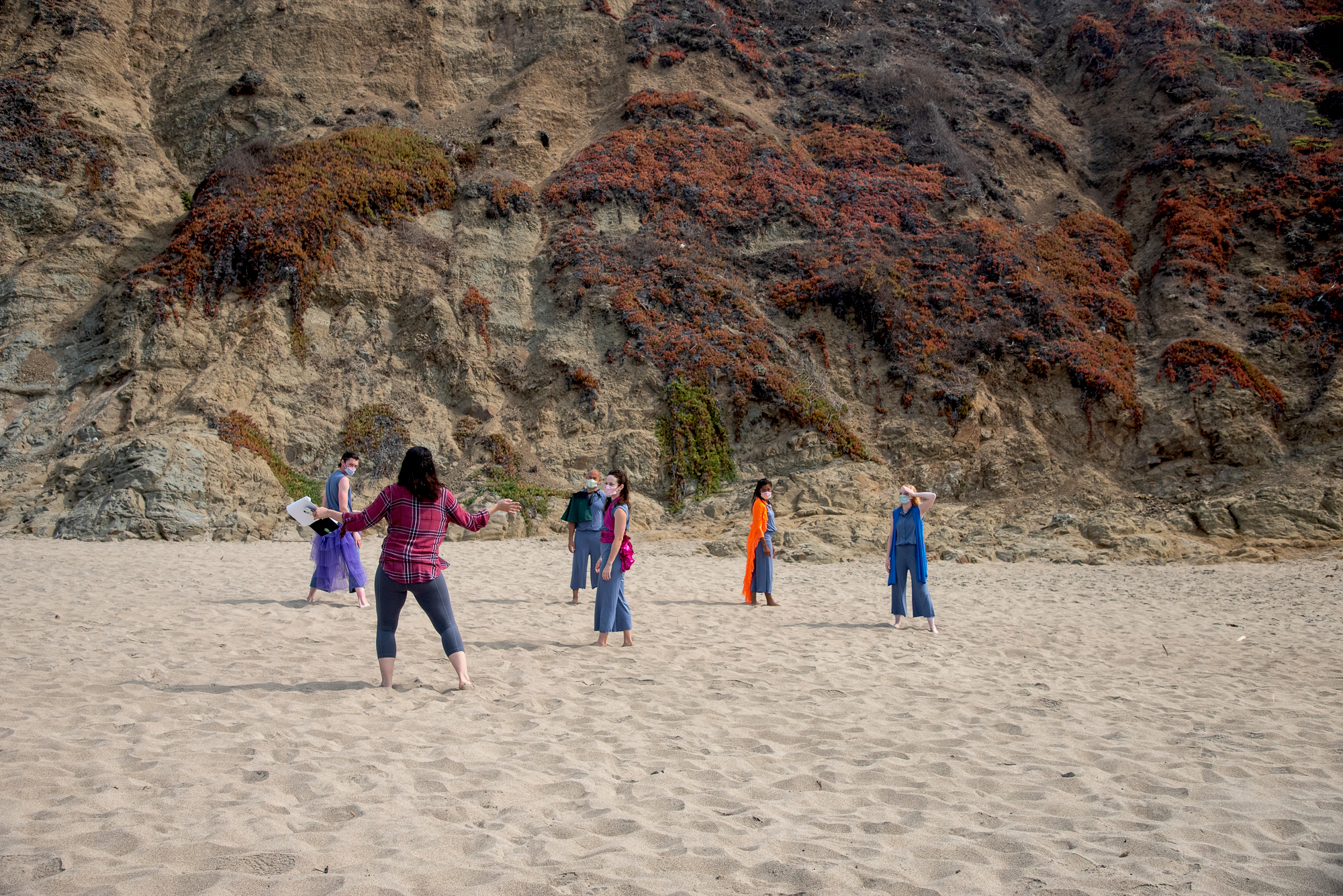UTOPIA FEATURES
Q&A WITH THE CHOREOGRAPHER
MEET KATERINA WONG OF RAWDANCE

How was this rehearsal process different from your typical process, working with the play’s script for inspiration?
My creative process often involves a significant amount of research before we begin developing movement in the studio. We'll draw from a variety of mediums depending on the concept we are investigating, including primary resource materials, news articles, podcasts, short films, personal reflections, and writing exercises. Having Mee's play to use as a jumping point for our choreographic contribution to Utopia felt like an organic extension of this process.
It was refreshing though, to have the content, subject matter, and spirit of the work already devised and thoughtfully crafted. Instead of beginning from scratch, we had a whole world within which to play and discover. This was really liberating for myself and my RAWdance collaborators. We drew from Mee's imagery about growing trees, pebbles in the sand, cicadas, and butterflies, for example, to launch solo explorations with each dancer. We used dialogues and relationships from the play to create conversational duets. And we pulled broader themes and questions from the play to explore the more complex group sections together.
How did the structure of your rehearsal process change, working remotely?
Our rehearsal process was completely re-imagined to honor health and safety protocols during the pandemic. We usually all meet as a group in a studio and develop material together over weeks or months of rehearsals.
For Utopia, we rehearsed entirely over Zoom from our own respective homes. The most dramatic difference was our available spaces. Instead of a nice rectangular rehearsal studio with mirrors and marley, we had tiny squares of hardwood floor in living rooms, or patches of carpet in bedrooms, or long strips of tile in hallways. It was challenging but it also brought out some really interesting problem-solving and patterning which informed the work in beautiful ways.
It was also quite daunting to develop group sections or duets together in our separate spaces online. We tried to get creative by using Zoom's breakout room feature in order to work on a few different sections at once, which is usually how we create together. We also relied on metronomes, specific counting, and other choreographic tools to stay together but I think many of us know how spotty internet connections can be.
My role turned into much more of a conductor than choreographer at times, using my voice to articulate markers for dancers to practice unison, or to "see" their duet partners, or to refine their solo works. While I prefer to move and sweat alongside my collaborators, this process really pushed my communication skills, which was a great tool to hone.

How is it different choreographing with social distancing in place?
Aside from all of the limitations I highlighted above, the greatest difference to our choreography with social distancing in place was how we crafted the final products. My work typically includes a lot of strong physicality, close partnering, weight-sharing, and floor work. It's also often very expressive, using breathe and emotion that in this project was mostly veiled by our face masks. Filming outdoors requires a sensitivity to uneven, unstable ground, and being socially distanced meant that our definitions and interpretations of duets and partnering had to be stretched into new forms and visions. I tried to think deeply about the choreography of the camerawork and the editing to overcome some of these restrictions.

What was the most challenging part of this process, creatively?
The most challenging part of this process from a creative standpoint was factoring in the hopes, dreams, needs, and desires of so many collaborating artists with such a tight timeline and without ever being in a room together. With 9 actors, 7 dancers, and a beautifully comprehensive creative team of sound, lighting, costume, prop, set designers, etc. the work was a true amalgamation of so many creative visions. It required many Zoom conversations, a lot of imagination, and most of all trust in each artist's expertise and perspective.
Because this whole process was new territory for us all (asking actors to film from home, dancers to rehearse at home and film outdoors, and stitching it all together) the planning process was an artform in itself. Also, due to our timeline and budget, I tasked myself with the full post-production edit of the dance sections and that was one of the most challenging digital projects that I've ever taken on.

What was the most rewarding part of this process, creatively?
It is such a pleasure to work with artists who you truly respect and admire, and who can teach you so much about leadership, organization, and problem-solving. It is also such a joy, and a part of my personal mission, to continue to partner with creative disciplines other than my own, to expand our artistic vocabularies and to unite our audiences.
I think though, the most rewarding aspect of this process was the proof that even in times of extreme constraints, emotional turmoil, mental uncertainty, and physical instability, the artistic process will always offer an outlet to build community, release tensions, ask important questions, and envision new worlds. As the first full production that I have been a part of since the pandemic began, I'm so grateful for Utopia for providing us with this invaluable space again.
Here's to more art in whatever way possible! Thank you all for watching.
